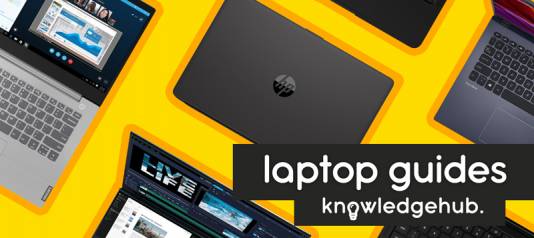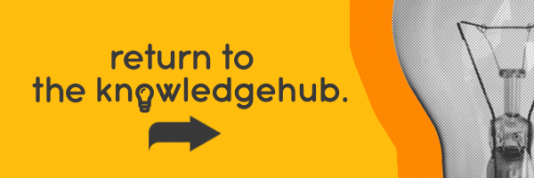This blog was updated in June 2022.
Now that we’re living in the age of mobile and smartphones, you might expect most of us to be living our best computer lives via these devices. They’re easy to use, fit nicely in our pockets, and are packed full of nifty little apps for everything under the sun.
So, why do we still keep using work laptops and desktop PCs as well? Well, there’s nothing that can substitute for these devices when it comes to raw computing power; something many of us need in our day to day jobs.
Working on them for complicated or demanding tasks is so much easier than trying to work on a smartphone. You can see properly, for a start! Not having to squint at a tiny four or five-inch screen is a welcome bonus when you have hours and hours of concentration ahead of you, and a busy workflow.
Wouldn’t it be brilliant if there was some sort of device which could bridge the gap between a laptop, a notebook, and a mobile phone? Something that’s easier to work on, and which provides a slightly more comfortable computing experience while on the go?
If that’s what you need, then a tablet PC might be just what you’re looking for.
What is a tablet computer?
A tablet computer, or simply a tablet, is the midway point between a smartphone and a laptop. Like a smartphone, a tablet offers portability thanks to its compact size, as well as ease of use with its touchscreen capabilities. No need for messy peripherals such as a keyboard and a mouse.
But when asking, “what is a tablet computer?”, there’s much more to consider than its similarities to a smartphone. Tablet computers can also be pretty powerful for their small size.
What can you do on a tablet?
Whether it’s word processing, spreadsheet work, or even recording video, most modern tablets have the tech needed to pull these tasks off with minimal issues.
But it’s not just technical work you can do on a tablet. From streaming video to listening to music, the small size of tablets makes it easy to curl up in bed and watch your favourite shows in comfort. And if you need to get a snack, you can just take the movie with you!
Landscape or portrait, you can browse and work in whatever orientation suits you. Read documents in portrait mode and watch movies in landscape mode – it’s that simple.
Interacting via touchscreen
Though tablets don’t need ports so that you can connect a keyboard, mouse, and monitor, they’re still highly interactive in terms of the way you use them thanks to their touchscreen capabilities.
Just like smartphones, you use the end of your finger, or a plastic stylus, to control what is going on on-screen, and which programs you interact with. The touchscreen feature is particularly useful when you are ‘on the go’ as it means everything you do is ‘self-contained’ to the tablet.
This means carting less kit around with you than you might if you used a laptop with USB peripherals. The compact nature of tablets and the neat way users interact with them are some of their most appealing features.
How to choose a tablet?
Now that we’ve answered the questions, “what is a tablet?”, and “what can a tablet do?”, let’s now look at how to choose a tablet. Like with any piece of tech, there are a couple of areas you’ll need to consider before making your decision.
What’s the best screen size on tablet PCs?
Getting the correct screen size for your chosen tablet is important to ensure you’ve got a screen capable of displaying what you want. Screen sizes can vary from a mini size of 7 inches, such as on the iPad Mini and Google Nexus 7, to larger 12” tablets, like the Microsoft Surface Pro.
It’s worth noting that the size of the screen doesn’t refer to the longest edges of the device. It means the length of the device’s diagonal, which is the distance between diagonally opposite corners of the viewing area. If a screen is 7 inches, it’s the physical distance from one screen corner to another.
Though mini tablets are popular for people who like to be able to slip the device into their coat pocket or handbag, the general and most-favoured tablet screen size tends to be 10”, which is perfect for both relaxing and working.
A larger screen on your tablet means a more comfortable internet browsing and video viewing experience, but smaller tablets are much more portable and they are far easier to carry around with you wherever you go.
When considering whether to buy a mini-tablet or a standard tablet, you should think about how you’ll use it. If it’s just a device to be used at home, either just by yourself or as a device for the whole family to enjoy, it is probably worth investing in a larger device.
Can I connect to the internet with my tablet PC?
In our busy and interconnected world, being able to hook up to the internet so that you can stay in contact with your colleagues, friends, and family, and keep on top of your social media profiles, can be crucial.
Unsurprisingly, almost every tablet currently on the market is Wi-Fi enabled. It would be pretty strange to come across one that wasn’t. But there’s one important thing to remember when thinking about your tablet’s internet capability. While they have Wi-Fi support, most don’t operate on data networks like 3G and 4G.
If you do need a tablet that goes one step further, you should look for one which has the option for 3G or 4G mobile data coverage. Be warned, though. Tablets with data are usually more expensive than the models that don’t.
If you opt for a SIM-enabled tablet you’ll also need to get yourself signed up for a mobile data plan with the network provider of your choice.

Will my new tablet have much storage space?
Though tablets don’t have the same sized memory as a powerful gaming PC or gaming laptop, this isn’t a problem. However, you should think about how you are going to use the tablet before you commit to a specific storage size as you won’t be able to upgrade it later.
For example, it would be disappointing if you invested in a tablet to support your photography hobby, and then found out the storage capacity isn’t enough to hold the 20,000 photos you want to take!
When you’re investigating the possibility of buying a tablet, you should consider whether you will be using a lot of apps as well. If you want to store lots of apps, games, photos, music, and movies on your tablet, then you’ll need one with a lot of built-in memory.
One of the important things to remember about tablets is that almost all of them don’t have any kind of physical connectivity. In simple terms, this means that your tablet won’t have a USB port into which you could slot a flash drive full of photos etc.

We’d seriously advise getting a tablet with at least 32GB of storage if you have a lot of memory-intensive files which you want to be stored on the device. But if your needs are more straightforward and you just prefer to stream music or video content over the internet, then you’ll likely be safe investing in a 16GB model of tablet.
Be aware that the amount of memory advertised sometimes differs from what you can use due to the size of the operating system (OS), so make sure to read the product details carefully.
However, even if you do have a low storage capacity tablet, there’s usually the option for cloud storage. You can find services such as BT Cloud or iCloud which let you store photos, videos, and all types of documents online. However, your files will only be accessible when you’re connected to the internet and online though.
You might also be able to find some tablets on the market that comes with an SD card slot, which allows you to insert a memory card so that you have extra storage space.
Which operating system will my new tablet run?
A very popular operating system among smartphone devices is Android, which was developed by Google. This OS is prevalent on many non-Apple tablets, mostly on Samsung, LG, and Motorola devices.
For Apple iPad users, things are slightly different. Users of the iPad tablet, in whichever size or model variant, will be interfacing with Apple’s iOS. Currently, it supports around 1,000,000 different apps. Some are standard on Apple devices, but most can be chosen and downloaded from Apple’s App Store.
If you want an extremely simple system, something really ‘clean’ and efficient, then Apple’s iOS might be the answer, which means an iPad is the tablet for you.
However, you might find that some tablets run quite close to using standard computer software. On a Windows tablet, you’ll be able to use Microsoft Office, Skype, and other Microsoft programs.
In addition, there are around a quarter of a million apps collected in the Windows Store to use on your tablet, though it’s worth remembering that Windows tablets are generally a bit less powerful than iOS or Android yet can be more expensive.
Do I need a tablet?
With a thorough understanding of tablets behind you, you should have no trouble picking a tablet to suit your needs. But if you’re still debating whether or not you need a tablet, then you need to consider your computing needs.
Do you want a mobile tool that’s more powerful and larger than a smartphone, but not nearly as cumbersome as a laptop? If the answer is yes, then a tablet is the right pick for you.
Tablets at Ebuyer
All-in-all, a tablet is a great way to bridge the gap between a smartphone, a notebook, and a laptop. When you get a new tablet, you’ll find it so tactile and easy to use that it will become your constant computer companion.
We’ve plenty of tablets for you to choose from in the Ebuyer store, from miniature compact models to chunky screens for your viewing pleasure. Start browsing the Ebuyer store today to find your perfect tablet and don’t forget to inquire about our express delivery.
And, of course, you can find plenty more articles and guides like this one over in the Ebuyer blog!




